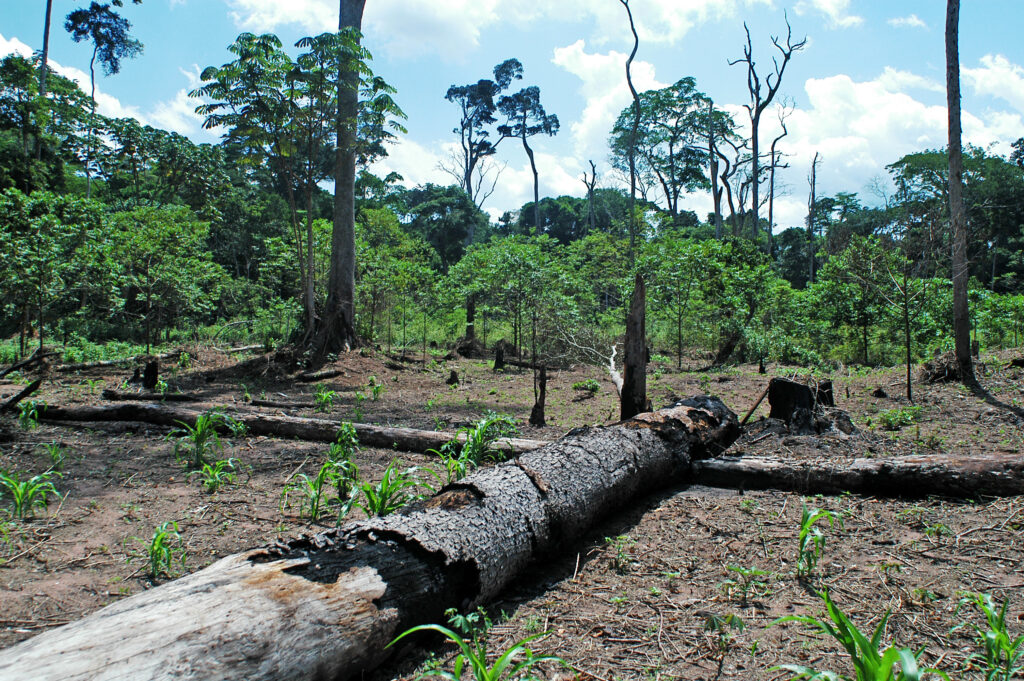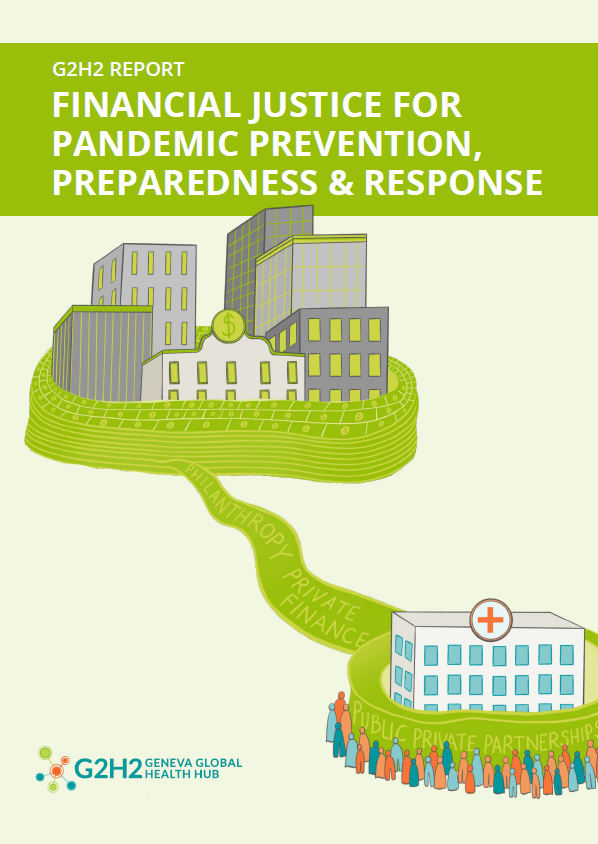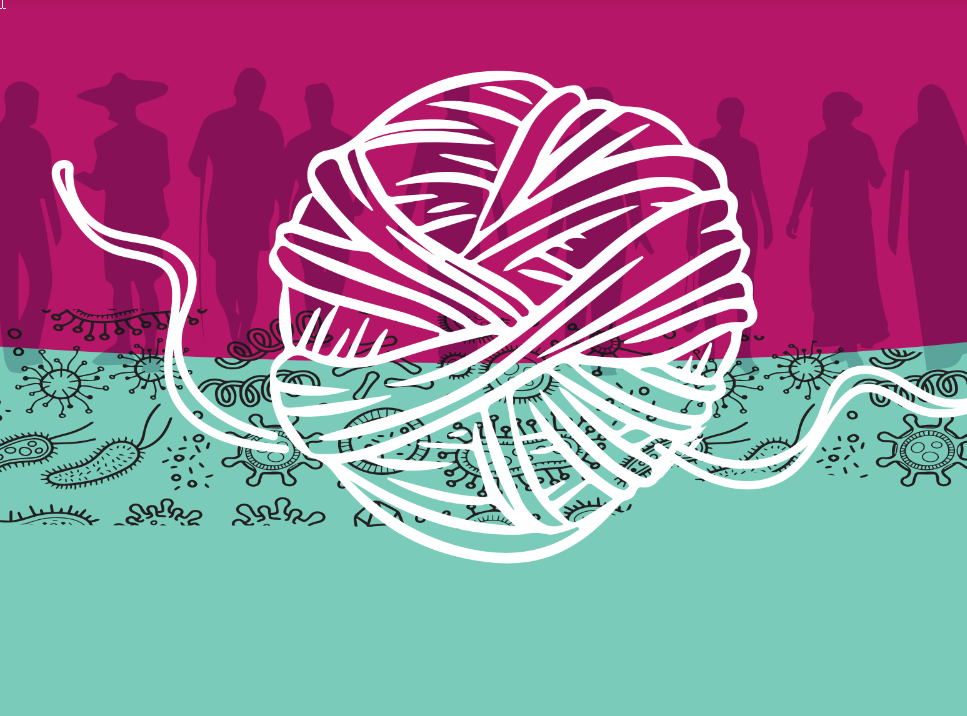Share Twitter Facebook Email Copy URL
Covid-19 is a pandemic that was foreseeable. For years, scientists and UN organisations have warned that the destruction of biodiversity and the outbreak of new infectious diseases go hand in hand. Pandemics, according to these warnings, may very well be the logical consequence of an ever increasing destruction of our natural habitats.
When I heard this theory for the first time, well over a year ago, in the middle of the first lockdown, I was not convinced. It sounded too much like jumping on the bandwagon, following a typical tendency of many NGOs to impose their respective issues on every current mega-topic, based on the motto: I have been fighting against deforestation for years, and if people in Bergamo are dying from a new virus, it will be the deforestation of the rainforest that is to blame. That sounds too simple, but it actually has a very real core to it.
A look at the scientific literature reveals fairly solid facts and a clear connection between the destruction of natural habitats and the emergence of pandemics. A particularly drastic example was published in Nature Scientific Reports in 2017: The scientists compared 27 Ebola outbreaks in Africa and found a statistically significant connection to rainforest deforestation in the same region in the two years prior to the outbreak.[1]

The mechanisms behind the phenomenon can be quite diverse. In the case of Ebola, deforestation is likely to reduce the habitat of the animal intermediate hosts of the virus. Squeezed together in a smaller area, the virus spreads more rapidly and the infection rate of the intermediate hosts increases. In addition, through deforestation, the boundary between people and intermediate hosts – i.e. the tree line – is significantly lengthened and hence more permeable. This leads to more human contacts with more strongly infected animals and an outbreak becomes much more likely.
Scientific work by a research team at Ulm University on bats in Central America showed a similar mechanism. They investigated a virus that is very similar to the human hepatitis B virus and that is transmitted by bats. The findings: A reduction of the natural habitat increases the likelihood of infection; bats in areas with a lower proportion of forest had significantly higher infection rates.
Another mechanism is that certain pathogen transmitting species – such as mosquitoes – benefit from deforestation because they can adapt much better to the destruction. Mosquitoes are then able to spread massively within a short time and subsequently, viruses are transmitted to people more easily and more frequently.
None of this is new. As early as 2013, the German Leibniz Community held a congress in Berlin with the great title “Biodiversity – Natural Health Protection”.[2] In 2015 WHO and CBD (Convention on Biological Diversity) published a joint report on “Biodiversity and Human Health”.[3] The UN experts came to a very clear conclusion:
“Ecosystem degradation may lead to both biodiversity loss and increased risk from infectious diseases (…) biodiversity may serve as a protective factor for preventing transmission, and maintaining ecosystems may help reduce exposure to infectious agents.“
The report identifies changes in land use as one of the main drivers of emerging diseases in humans.
In 2019, the IPBES “World Biodiversity Council” – equivalent to the IPCC on climate issues – brought together scientists and governments from all over the world to discuss the (alarming) decline in biodiversity throughout the world. A few weeks prior to the outbreak of Covid-19, in their summary for politicians, they wrote: “Emerging infectious diseases in wildlife, domestic animals, plants or people can be exacerbated by human activities such as land clearing and habitat fragmentation”.[4]
Destruction of nature is the crisis behind – and chronologically before – the corona crisis. Yes, it is very likely that this pandemic has a very human origin – but not in a laboratory, as is now rumoured in some Western countries, but in chainsaws and bulldozers. Zoonoses occur more frequently when the natural habitats of animals are destroyed and boundaries between animals and humans fall.
This realisation has even reached the heart of capitalism. Shortly after the onset of the Covid-19 pandemic, in March 2020, the World Economic Forum website stated pretty clearly: “The increasing frequency of disease outbreaks is linked to climate change and biodiversity loss.”[5] These are the very people who sent the chainsaws and bulldozers in the first place, and then protected themselves from infection in the seclusion of the Swiss Alps.
Rainforests are not cut down for fun, but for clear-cut profits. It is the meat mafia that devastates vast areas of the Amazon for cheap animal feed, it is the Unilevers and Nestlés of this world who clear half of Southeast Asia for cheap palm oil – and then claim that they do it for us, because we demand these products.
The fight against the next pandemic is not only about better health systems and fairer distribution of vaccines, but also against a capitalist mode of production that is based on the destruction of natural biodiversity and brings us viruses that would have remained in the animal kingdom under different conditions instead of driving us into pandemics.
[1] https://www.nature.com/articles/s41598-017-14727-9
[2] https://www.leibniz-gemeinschaft.de/ueber-uns/neues/presse/pressemitteilungen/pressemitteilungen-single/newsdetails/biodiversitaet-die-natuerliche-gesundheitsvorsorge-2-internationale-biodiversitaetskonferenz-in-ber.html
[3] https://www.cbd.int/health/SOK-biodiversity-en.pdf
[4] https://ipbes.net/sites/default/files/2020-02/ipbes_global_assessment_report_summary_for_policymakers_en.pdf Page 22
[5] https://www.weforum.org/agenda/2020/03/biodiversity-loss-is-hurting-our-ability-to-prepare-for-pandemics/
Jan van Aken is a German activist for Greenpeace and a politician (Die Linke). He was a member of the German Bundestag from 2009 to 2017. He is an expert on armament, agricultural and health policy.



